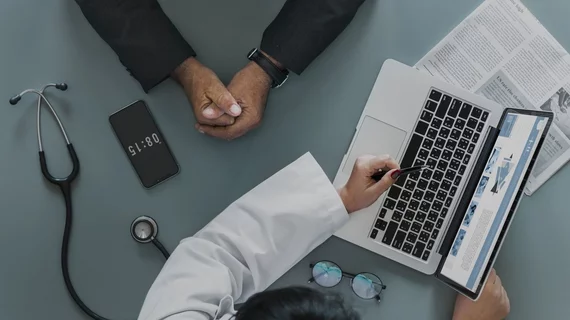Consumer-oriented radiology reports a ‘promising’ strategy to improve patient-centered outcomes
Healthcare consumer-oriented radiology reports present a “promising” strategy to help providers improve patient-centered outcomes, researchers detailed in JACR.
Experts recently tested out this practice change across 10 outpatient imaging centers in Denver. The commercially available software processes raw text reports, making them available to consumers through a radiology-specific patient portal. This includes providing plain language explanations embedded throughout the report, accessible via hyperlinks as the patient reads.
Scientists sought to gauge better understand patients’ experience with the reports, administering a nine-question survey to those who used them in 2022 or 2023.
“Our results suggest that patient-friendly radiology reports may represent a promising strategy for improving patient-centered outcomes in radiology, where direct patient engagement opportunities are traditionally limited,” corresponding author Jennifer Kemp, MD, with Diversified Radiology of Colorado, and colleagues wrote Sept. 27.
A total of nearly 6,200 patients viewed their online patient-centered radiology report during the study period and agreed to be contacted for further feedback. Of those, 1,033 completed the survey, which was administered via email. Participants were 62% female at an average age of 64 and ranging from 9 to 92.
Kemp et al. believe the reports showed promise in addressing the patient-centered outcome of “knowledge gained and contribution to the healthcare journey.” Those surveyed said the reports helped them feel better prepared (81% agree/strongly agree), have a more productive conversation (87%), and better understand treatment recommendations (77%). Another 70% of those surveyed said the patient-friendly radiology report reduced anxiety around receiving their results.
More than 75% of respondents reported having a follow-up visit with their clinician after their imaging exam. Meanwhile, only about 15% said having access to the report would make them less likely to show up for future appointments. “Interestingly,” the authors noted, about 31% said they were less likely to call or message their doctor with questions about an imaging exam.
“Taken together, these results suggest that while patient-centered radiology reports may not dissuade patients from following up with their providers, they could potentially reduce some of the administrative burden of imaging-related phone calls and messages,” Kemp and co-authors noted.
Another 45% of respondents said they showed the patient-friendly radiology report to their regular healthcare provider, and 73% indicated that the clinician had a “positive or very positive” opinion about it.
“Our results suggest that providing radiology results in an interactive, patient-friendly format may improve radiology-specific [patient-centered outcomes],” the authors advised. “Patient survey responses indicate that viewing interactive patient-friendly reports is positively associated with knowledge gained, as exemplified by improved preparedness for appointments, enhanced conversations with physicians, and improved ability to understand treatment recommendations.”
Read more about the study, including potential limitations, in JACR at the link below.

